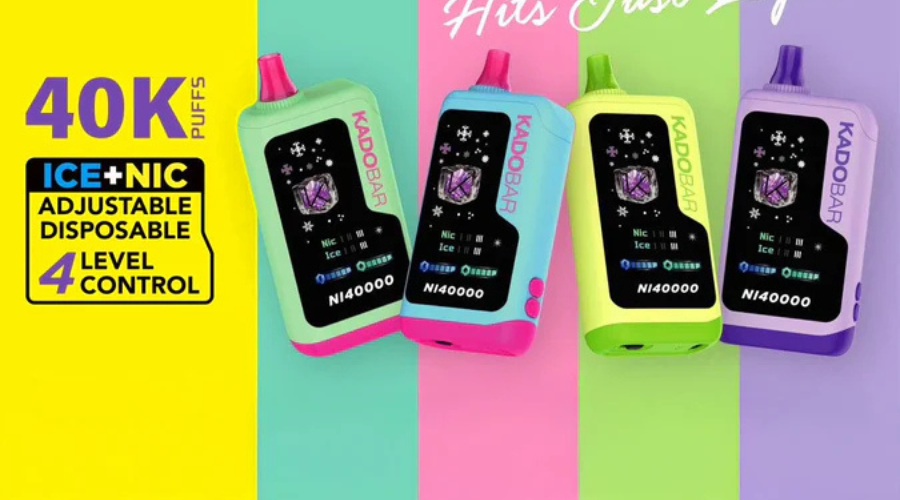Yes, vape juice does have calories, but the amount is minimal. Vaping has become a popular alternative to smoking, and in this article, we'll explore whether vaping contributes to calorie intake, the ingredients in e-liquids, and how it may affect your metabolism and weight.
What Is Vaping?
Vaping is the act of inhaling a mist produced by an electronic cigarette (e-cigarette). This mist is created when a battery-powered device heats a liquid, turning it into an aerosol that can be inhaled. The aerosol typically contains nicotine, flavorings, and other chemicals.
How Does It Work?
Vaping works by using a battery-powered device that heats e-liquid, creating an aerosol for inhalation.
-
The Device: A vape device consists of four parts: a battery, a heating element (coil), a liquid reservoir (cartridge or tank), and a mouthpiece.
-
The Liquid (E-liquid): E-liquid contains nicotine (in varying amounts), flavorings, propylene glycol (PG), and vegetable glycerin (VG).
-
Heating Process: When the user activates the device, the battery powers the heating element, which vaporizes the e-liquid. The vapor is then inhaled, delivering nicotine and flavor.

Does Vape Juice Have Calories?
Yes, vape juice does contain calories, but the amount is minimal. The primary source of calories comes from vegetable glycerin (VG), which provides about 4 calories per gram. However, the total calorie content is negligible, especially when considering the small amounts used in vaping.
E-Liquid and Its Composition
Vape juice, also called e-liquid, typically contains four main ingredients: propylene glycol (PG), vegetable glycerin (VG), nicotine (optional), and flavorings. PG and VG are the base liquids that carry flavor and create vapor, while nicotine provides the addictive element.
Propylene Glycol (PG)
This colorless, odorless liquid acts as a carrier for flavorings and provides the "throat hit" sensation when vaping. It is commonly used in foods, medicines, and cosmetics.
Vegetable Glycerin (VG)
VG is a thicker, sweeter liquid that helps produce larger vapor clouds. It is also found in food products and personal care items. VG makes the vaping experience smoother and more flavorful.
Nicotine
Nicotine is an addictive chemical extracted from tobacco. In e-liquids, nicotine is optional, and it is available in varying strengths to suit different users' preferences. Some e-liquids are nicotine-free.
Flavorings
E-liquids use food-grade flavorings that provide various tastes, from fruity to dessert or tobacco-like flavors. These flavorings are carefully chosen to ensure safety and a satisfying vaping experience.
Recommended Related Reading: Best Refillable Vape of 2025: Top Picks for Flavor & Performance
Key points of e-liquid ingredients
PG/VG Ratio
The ratio of PG to VG in e-liquid plays a significant role in the vaping experience. A higher PG ratio provides a stronger throat hit and more flavor, while a higher VG ratio produces larger vapor clouds and smoother inhalation.
Nicotine Levels
E-liquids come in a range of nicotine strengths, from high concentrations to nicotine-free options. The nicotine content is customizable, allowing users to adjust it based on their preferences.
Will You Consume and Absorb Calories from Vaping?
No, you won’t absorb calories from vaping because the process involves inhaling vapor, not ingesting food or drink. Calories are absorbed through your digestive system, and vaping does not contribute significantly to your daily calorie intake.
Explanation of E-Liquid Calories
While e-liquids do contain calories, the amount is negligible. Most of the calories come from VG and PG, as well as flavoring agents. However, these ingredients contribute very few calories when vaporized, and they are not absorbed by the body in the same way food is.
Calories and the Digestive System
You can only absorb calories when food or drink enters your digestive system. The body processes calories differently when they are inhaled rather than ingested. Since vaping doesn’t involve digestion, the calories in e-liquids are not absorbed in the same way.
Minimal Caloric Impact of Vaping
Even if you could somehow absorb calories through your lungs, the caloric content in vape juice is so small that it would not significantly affect your weight or calorie intake. The contribution of calories from vaping is minimal and unlikely to impact your daily caloric balance.
Vaping Is Not the Culprit for Experiencing Weight Gain
Vaping itself is not typically the cause of weight gain. The weight gain associated with quitting smoking is often due to behavioral changes, such as increased appetite or altered eating habits. Nicotine from cigarettes suppresses appetite, and when smokers quit, they may feel hungrier.
Minimal Calories in Vape Liquid
The calories in vape juice are negligible, so vaping doesn’t contribute significantly to weight gain. The small amount of calories in e-liquids, mostly from VG and PG, has no noticeable impact on body weight.
Nicotine and Appetite Changes
When people quit smoking or vaping, the loss of nicotine’s appetite-suppressing effects may lead to increased hunger. Changes in eating habits, combined with a slower metabolism, can contribute to weight gain even if the individual doesn’t eat more than usual.
Mixed Research Findings on Vaping and Weight
Studies on vaping and weight have shown mixed results. Some studies suggest there is no clear link between vaping and weight change, while others suggest that some individuals might use vaping as a weight management tool, leading to concerns about potential weight gain.
Recommended Related Reading: Best Zero Nicotine Vapes 2025
FAQs
How Many Calories Are in Vape Juice?
On average, vape juice contains around 10 calories per 2 ml. The calories mostly come from VG and some flavorings. The amount of calories is so low that it won't have an impact on weight gain.
Do Flavors Contribute to Calories?
Flavorings in e-liquids are food-grade chemicals that don’t contribute significant calories. While they give e-liquids their taste, they don’t add enough calories to affect your overall intake.
Do Vapes Burn Fat?
Vapes do not directly burn fat. However, nicotine in vapes may suppress appetite and increase metabolism, potentially aiding weight loss. It’s important to note that vaping is not a healthy or sustainable weight-loss method and carries various health risks.




